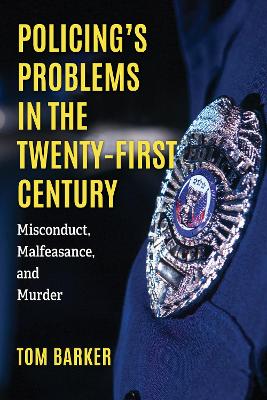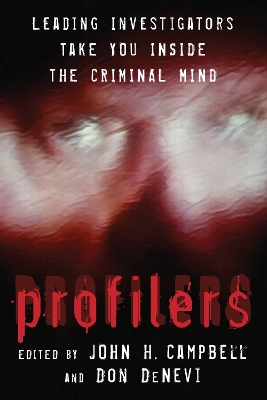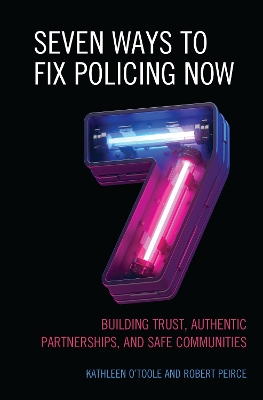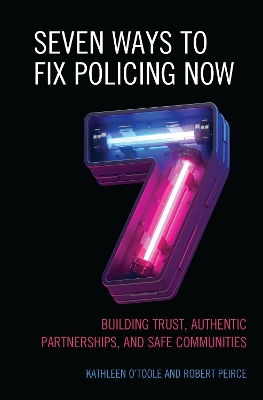Future of Policing
 portes grátis
portes grátis
Future of Policing
200 Recommendations to Enhance Policing and Community Safety
Cunningham, Scott A.
Rowman & Littlefield
02/2022
318
Dura
Inglês
9781538163047
15 a 20 dias
649
Descrição não disponível.
Introduction
PART I: Global Policing Concepts
Chapter 1: Role and History of Policing
Brief discussion of history of policing worldwide
Peelian principles of policing
Relevant recommendations
Chapter 2: Re-Defining the Tasks for Which the Police are Responsible
What tasks should police handle
Mental health issues
Homelessness
Options for shifting tasks to others
Relevant recommendations
Chapter 3: Role and Responsibility of the Federal Government
Actions Federal Government should take
Coordination between Federal and State Governments
Setting nationwide standards & expectations
Relevant recommendations
Chapter 4: Core Foundational Beliefs
Identification of critical beliefs to provide guidance and act as foundation for all actions, policies, and programs
Key principles to establish appropriate culture
Relevant recommendations
Chapter 5: Agency Actions
Major actions all agencies should take
Accreditation
President's Task Force on 21st Century Policing
Relevant recommendations
Chapter 6: Community Oriented and Problem Solving Policing
Establishing Community Oriented Policing & problem Solving Policing as primary methods of delivering police services
Building community relationships & interaction
Relevant Recommendations
PART II: Administration
Chapter 7: Leadership
Characteristics, qualities, & actions of the Chief
Setting performance expectations & focus of agency
Relevant recommendations
Chapter 8: Personnel
Personnel issues critical to service delivery
Recruiting efforts focused on desired characteristics
Background processes
Hiring standards
Testing methods (fitness, psychological, medical, etc.)
Relevant recommendations
Chapter 9: Training
Increase training, especially recruit training
Federal & state minimum requirements for consistency
Recruit training
In-service training
Promotional training
Specialized training
General training processes
Relevant recommendations
Chapter 10: Discipline
Need for & value of disciplinary processes
General & specific disciplinary aspects
Implementation of disciplinary
Setting agency expectations
Disciplinary info to state certification board & public
Relevant recommendations
Chapter 11: Complaints and Investigations
Need for & value of internal investigations function
Informing the complainant & public of outcomes & stats
General issues regarding complaints
Relevant recommendations
Chapter 12 Officer Wellness and Health
Benefits of wellness focus
Need for an Early Warning System
Mandatory fitness program
Relevant recommendations
PART III: Operations
Chapter 13: Use of Force
Critical issues such as: using only minimum needed,
reporting all uses of force, supervisor response,
uses of discipline and training, etc.
Investigating uses of force, internally & externally
De-escalation
Relevant recommendations
Chapter 14: Peaceful, Compliant Protests
Right to protest & protecting rights of citizens
Appropriate police attire, equipment, & tactics
Recording of protests & police actions
Coordination with organizers
Relevant recommendations
Chapter 15: Non-Compliant Protests, Civil Disorders, Rioting and Looting
Use of force review
Appropriate police attire, equipment, & tactics
Recording of events & police activities
General & specific actions for these events
Providing direction & safe dispersal
Relevant recommendations
Chapter 16: Pursuits
Need for policy, procedures, training, & supervision
Dangers associated with pursuits
Tactics
Documentation & review of pursuits
Relevant recommendations
PART IV: Equipment
Chapter 17: Military Surplus and Specialty Vehicles
1033 military surplus program
Applicable issues, perceptions, benefits
Relevant recommendations
Chapter 18: Helicopters, Airplanes, and Unmanned Aerial Vehicles
Issues, benefits, concerns
Policy guided use & restrictions
Public involvement
Training & maintenance
Relevant recommendations
Chapter 19: Cameras
Issues, benefits, concerns
Legal concerns & different laws
Use guidelines, requirements & discipline
Public involvement & viewing
Different types
Understanding limitations
Relevant recommendations
Chapter 20: Uniforms
Understanding impact of uniform choices
Appropriateness for event, activity
Officer identification
Inappropriate/unauthorized attachments
Relevant recommendations
PART V: Weapons
Chapter 21: Firearms
Types used by police
Training including accuracy, decision-making, legal issues
De-escalation
Rendering medical attention
Documentation & investigation of use
Relevant recommendations
Chapter 22: Less Than Lethal Weapons
Types used by police
Appropriate use
Training including effectiveness, proper use, legal issues,
decision-making
De-escalation
Rendering medical aid
Documentation & investigation of use
Relevant recommendations
PART VI: Role of Others
Chapter 23: Elected and Appointed Officials
Role regarding policing & community safety
Getting facts
Understanding policing issues
Keeping police out of political realm
Relevant recommendations
Chapter 24: Unions
Role regarding members, profession, & community
Participation in improvement/enhancement efforts
Issues regarding political involvement
Relevant recommendations
Chapter 25: Media
Role of media in democratic society
Accuracy in reporting police related issues
Media-police coordination & cooperation
Media involvement in active situations
Relevant recommendations
Chapter 26: Citizens
Role of citizens in community safety & policing
Need for & benefit of compliance with laws & directions
Rights of citizens regarding police, etc.
Citizen participation in policing overall
Relevant recommendations
PART VII: Conclusions
Abbreviations
List of Recommendations
References
Recommended resources
PART I: Global Policing Concepts
Chapter 1: Role and History of Policing
Brief discussion of history of policing worldwide
Peelian principles of policing
Relevant recommendations
Chapter 2: Re-Defining the Tasks for Which the Police are Responsible
What tasks should police handle
Mental health issues
Homelessness
Options for shifting tasks to others
Relevant recommendations
Chapter 3: Role and Responsibility of the Federal Government
Actions Federal Government should take
Coordination between Federal and State Governments
Setting nationwide standards & expectations
Relevant recommendations
Chapter 4: Core Foundational Beliefs
Identification of critical beliefs to provide guidance and act as foundation for all actions, policies, and programs
Key principles to establish appropriate culture
Relevant recommendations
Chapter 5: Agency Actions
Major actions all agencies should take
Accreditation
President's Task Force on 21st Century Policing
Relevant recommendations
Chapter 6: Community Oriented and Problem Solving Policing
Establishing Community Oriented Policing & problem Solving Policing as primary methods of delivering police services
Building community relationships & interaction
Relevant Recommendations
PART II: Administration
Chapter 7: Leadership
Characteristics, qualities, & actions of the Chief
Setting performance expectations & focus of agency
Relevant recommendations
Chapter 8: Personnel
Personnel issues critical to service delivery
Recruiting efforts focused on desired characteristics
Background processes
Hiring standards
Testing methods (fitness, psychological, medical, etc.)
Relevant recommendations
Chapter 9: Training
Increase training, especially recruit training
Federal & state minimum requirements for consistency
Recruit training
In-service training
Promotional training
Specialized training
General training processes
Relevant recommendations
Chapter 10: Discipline
Need for & value of disciplinary processes
General & specific disciplinary aspects
Implementation of disciplinary
Setting agency expectations
Disciplinary info to state certification board & public
Relevant recommendations
Chapter 11: Complaints and Investigations
Need for & value of internal investigations function
Informing the complainant & public of outcomes & stats
General issues regarding complaints
Relevant recommendations
Chapter 12 Officer Wellness and Health
Benefits of wellness focus
Need for an Early Warning System
Mandatory fitness program
Relevant recommendations
PART III: Operations
Chapter 13: Use of Force
Critical issues such as: using only minimum needed,
reporting all uses of force, supervisor response,
uses of discipline and training, etc.
Investigating uses of force, internally & externally
De-escalation
Relevant recommendations
Chapter 14: Peaceful, Compliant Protests
Right to protest & protecting rights of citizens
Appropriate police attire, equipment, & tactics
Recording of protests & police actions
Coordination with organizers
Relevant recommendations
Chapter 15: Non-Compliant Protests, Civil Disorders, Rioting and Looting
Use of force review
Appropriate police attire, equipment, & tactics
Recording of events & police activities
General & specific actions for these events
Providing direction & safe dispersal
Relevant recommendations
Chapter 16: Pursuits
Need for policy, procedures, training, & supervision
Dangers associated with pursuits
Tactics
Documentation & review of pursuits
Relevant recommendations
PART IV: Equipment
Chapter 17: Military Surplus and Specialty Vehicles
1033 military surplus program
Applicable issues, perceptions, benefits
Relevant recommendations
Chapter 18: Helicopters, Airplanes, and Unmanned Aerial Vehicles
Issues, benefits, concerns
Policy guided use & restrictions
Public involvement
Training & maintenance
Relevant recommendations
Chapter 19: Cameras
Issues, benefits, concerns
Legal concerns & different laws
Use guidelines, requirements & discipline
Public involvement & viewing
Different types
Understanding limitations
Relevant recommendations
Chapter 20: Uniforms
Understanding impact of uniform choices
Appropriateness for event, activity
Officer identification
Inappropriate/unauthorized attachments
Relevant recommendations
PART V: Weapons
Chapter 21: Firearms
Types used by police
Training including accuracy, decision-making, legal issues
De-escalation
Rendering medical attention
Documentation & investigation of use
Relevant recommendations
Chapter 22: Less Than Lethal Weapons
Types used by police
Appropriate use
Training including effectiveness, proper use, legal issues,
decision-making
De-escalation
Rendering medical aid
Documentation & investigation of use
Relevant recommendations
PART VI: Role of Others
Chapter 23: Elected and Appointed Officials
Role regarding policing & community safety
Getting facts
Understanding policing issues
Keeping police out of political realm
Relevant recommendations
Chapter 24: Unions
Role regarding members, profession, & community
Participation in improvement/enhancement efforts
Issues regarding political involvement
Relevant recommendations
Chapter 25: Media
Role of media in democratic society
Accuracy in reporting police related issues
Media-police coordination & cooperation
Media involvement in active situations
Relevant recommendations
Chapter 26: Citizens
Role of citizens in community safety & policing
Need for & benefit of compliance with laws & directions
Rights of citizens regarding police, etc.
Citizen participation in policing overall
Relevant recommendations
PART VII: Conclusions
Abbreviations
List of Recommendations
References
Recommended resources
Este título pertence ao(s) assunto(s) indicados(s). Para ver outros títulos clique no assunto desejado.
21st Century Policing;body worn cameras;Citizen participation;community-based policing;law enforcement;Media-police cooperation;Media-police coordination;Peelian Principles of Policing;police agency;police education;police leadership;Police reform;police services;police services agency;police training;Policing;Policing in America;problem solving policing;Procedural justice;use of force
Introduction
PART I: Global Policing Concepts
Chapter 1: Role and History of Policing
Brief discussion of history of policing worldwide
Peelian principles of policing
Relevant recommendations
Chapter 2: Re-Defining the Tasks for Which the Police are Responsible
What tasks should police handle
Mental health issues
Homelessness
Options for shifting tasks to others
Relevant recommendations
Chapter 3: Role and Responsibility of the Federal Government
Actions Federal Government should take
Coordination between Federal and State Governments
Setting nationwide standards & expectations
Relevant recommendations
Chapter 4: Core Foundational Beliefs
Identification of critical beliefs to provide guidance and act as foundation for all actions, policies, and programs
Key principles to establish appropriate culture
Relevant recommendations
Chapter 5: Agency Actions
Major actions all agencies should take
Accreditation
President's Task Force on 21st Century Policing
Relevant recommendations
Chapter 6: Community Oriented and Problem Solving Policing
Establishing Community Oriented Policing & problem Solving Policing as primary methods of delivering police services
Building community relationships & interaction
Relevant Recommendations
PART II: Administration
Chapter 7: Leadership
Characteristics, qualities, & actions of the Chief
Setting performance expectations & focus of agency
Relevant recommendations
Chapter 8: Personnel
Personnel issues critical to service delivery
Recruiting efforts focused on desired characteristics
Background processes
Hiring standards
Testing methods (fitness, psychological, medical, etc.)
Relevant recommendations
Chapter 9: Training
Increase training, especially recruit training
Federal & state minimum requirements for consistency
Recruit training
In-service training
Promotional training
Specialized training
General training processes
Relevant recommendations
Chapter 10: Discipline
Need for & value of disciplinary processes
General & specific disciplinary aspects
Implementation of disciplinary
Setting agency expectations
Disciplinary info to state certification board & public
Relevant recommendations
Chapter 11: Complaints and Investigations
Need for & value of internal investigations function
Informing the complainant & public of outcomes & stats
General issues regarding complaints
Relevant recommendations
Chapter 12 Officer Wellness and Health
Benefits of wellness focus
Need for an Early Warning System
Mandatory fitness program
Relevant recommendations
PART III: Operations
Chapter 13: Use of Force
Critical issues such as: using only minimum needed,
reporting all uses of force, supervisor response,
uses of discipline and training, etc.
Investigating uses of force, internally & externally
De-escalation
Relevant recommendations
Chapter 14: Peaceful, Compliant Protests
Right to protest & protecting rights of citizens
Appropriate police attire, equipment, & tactics
Recording of protests & police actions
Coordination with organizers
Relevant recommendations
Chapter 15: Non-Compliant Protests, Civil Disorders, Rioting and Looting
Use of force review
Appropriate police attire, equipment, & tactics
Recording of events & police activities
General & specific actions for these events
Providing direction & safe dispersal
Relevant recommendations
Chapter 16: Pursuits
Need for policy, procedures, training, & supervision
Dangers associated with pursuits
Tactics
Documentation & review of pursuits
Relevant recommendations
PART IV: Equipment
Chapter 17: Military Surplus and Specialty Vehicles
1033 military surplus program
Applicable issues, perceptions, benefits
Relevant recommendations
Chapter 18: Helicopters, Airplanes, and Unmanned Aerial Vehicles
Issues, benefits, concerns
Policy guided use & restrictions
Public involvement
Training & maintenance
Relevant recommendations
Chapter 19: Cameras
Issues, benefits, concerns
Legal concerns & different laws
Use guidelines, requirements & discipline
Public involvement & viewing
Different types
Understanding limitations
Relevant recommendations
Chapter 20: Uniforms
Understanding impact of uniform choices
Appropriateness for event, activity
Officer identification
Inappropriate/unauthorized attachments
Relevant recommendations
PART V: Weapons
Chapter 21: Firearms
Types used by police
Training including accuracy, decision-making, legal issues
De-escalation
Rendering medical attention
Documentation & investigation of use
Relevant recommendations
Chapter 22: Less Than Lethal Weapons
Types used by police
Appropriate use
Training including effectiveness, proper use, legal issues,
decision-making
De-escalation
Rendering medical aid
Documentation & investigation of use
Relevant recommendations
PART VI: Role of Others
Chapter 23: Elected and Appointed Officials
Role regarding policing & community safety
Getting facts
Understanding policing issues
Keeping police out of political realm
Relevant recommendations
Chapter 24: Unions
Role regarding members, profession, & community
Participation in improvement/enhancement efforts
Issues regarding political involvement
Relevant recommendations
Chapter 25: Media
Role of media in democratic society
Accuracy in reporting police related issues
Media-police coordination & cooperation
Media involvement in active situations
Relevant recommendations
Chapter 26: Citizens
Role of citizens in community safety & policing
Need for & benefit of compliance with laws & directions
Rights of citizens regarding police, etc.
Citizen participation in policing overall
Relevant recommendations
PART VII: Conclusions
Abbreviations
List of Recommendations
References
Recommended resources
PART I: Global Policing Concepts
Chapter 1: Role and History of Policing
Brief discussion of history of policing worldwide
Peelian principles of policing
Relevant recommendations
Chapter 2: Re-Defining the Tasks for Which the Police are Responsible
What tasks should police handle
Mental health issues
Homelessness
Options for shifting tasks to others
Relevant recommendations
Chapter 3: Role and Responsibility of the Federal Government
Actions Federal Government should take
Coordination between Federal and State Governments
Setting nationwide standards & expectations
Relevant recommendations
Chapter 4: Core Foundational Beliefs
Identification of critical beliefs to provide guidance and act as foundation for all actions, policies, and programs
Key principles to establish appropriate culture
Relevant recommendations
Chapter 5: Agency Actions
Major actions all agencies should take
Accreditation
President's Task Force on 21st Century Policing
Relevant recommendations
Chapter 6: Community Oriented and Problem Solving Policing
Establishing Community Oriented Policing & problem Solving Policing as primary methods of delivering police services
Building community relationships & interaction
Relevant Recommendations
PART II: Administration
Chapter 7: Leadership
Characteristics, qualities, & actions of the Chief
Setting performance expectations & focus of agency
Relevant recommendations
Chapter 8: Personnel
Personnel issues critical to service delivery
Recruiting efforts focused on desired characteristics
Background processes
Hiring standards
Testing methods (fitness, psychological, medical, etc.)
Relevant recommendations
Chapter 9: Training
Increase training, especially recruit training
Federal & state minimum requirements for consistency
Recruit training
In-service training
Promotional training
Specialized training
General training processes
Relevant recommendations
Chapter 10: Discipline
Need for & value of disciplinary processes
General & specific disciplinary aspects
Implementation of disciplinary
Setting agency expectations
Disciplinary info to state certification board & public
Relevant recommendations
Chapter 11: Complaints and Investigations
Need for & value of internal investigations function
Informing the complainant & public of outcomes & stats
General issues regarding complaints
Relevant recommendations
Chapter 12 Officer Wellness and Health
Benefits of wellness focus
Need for an Early Warning System
Mandatory fitness program
Relevant recommendations
PART III: Operations
Chapter 13: Use of Force
Critical issues such as: using only minimum needed,
reporting all uses of force, supervisor response,
uses of discipline and training, etc.
Investigating uses of force, internally & externally
De-escalation
Relevant recommendations
Chapter 14: Peaceful, Compliant Protests
Right to protest & protecting rights of citizens
Appropriate police attire, equipment, & tactics
Recording of protests & police actions
Coordination with organizers
Relevant recommendations
Chapter 15: Non-Compliant Protests, Civil Disorders, Rioting and Looting
Use of force review
Appropriate police attire, equipment, & tactics
Recording of events & police activities
General & specific actions for these events
Providing direction & safe dispersal
Relevant recommendations
Chapter 16: Pursuits
Need for policy, procedures, training, & supervision
Dangers associated with pursuits
Tactics
Documentation & review of pursuits
Relevant recommendations
PART IV: Equipment
Chapter 17: Military Surplus and Specialty Vehicles
1033 military surplus program
Applicable issues, perceptions, benefits
Relevant recommendations
Chapter 18: Helicopters, Airplanes, and Unmanned Aerial Vehicles
Issues, benefits, concerns
Policy guided use & restrictions
Public involvement
Training & maintenance
Relevant recommendations
Chapter 19: Cameras
Issues, benefits, concerns
Legal concerns & different laws
Use guidelines, requirements & discipline
Public involvement & viewing
Different types
Understanding limitations
Relevant recommendations
Chapter 20: Uniforms
Understanding impact of uniform choices
Appropriateness for event, activity
Officer identification
Inappropriate/unauthorized attachments
Relevant recommendations
PART V: Weapons
Chapter 21: Firearms
Types used by police
Training including accuracy, decision-making, legal issues
De-escalation
Rendering medical attention
Documentation & investigation of use
Relevant recommendations
Chapter 22: Less Than Lethal Weapons
Types used by police
Appropriate use
Training including effectiveness, proper use, legal issues,
decision-making
De-escalation
Rendering medical aid
Documentation & investigation of use
Relevant recommendations
PART VI: Role of Others
Chapter 23: Elected and Appointed Officials
Role regarding policing & community safety
Getting facts
Understanding policing issues
Keeping police out of political realm
Relevant recommendations
Chapter 24: Unions
Role regarding members, profession, & community
Participation in improvement/enhancement efforts
Issues regarding political involvement
Relevant recommendations
Chapter 25: Media
Role of media in democratic society
Accuracy in reporting police related issues
Media-police coordination & cooperation
Media involvement in active situations
Relevant recommendations
Chapter 26: Citizens
Role of citizens in community safety & policing
Need for & benefit of compliance with laws & directions
Rights of citizens regarding police, etc.
Citizen participation in policing overall
Relevant recommendations
PART VII: Conclusions
Abbreviations
List of Recommendations
References
Recommended resources
Este título pertence ao(s) assunto(s) indicados(s). Para ver outros títulos clique no assunto desejado.
21st Century Policing;body worn cameras;Citizen participation;community-based policing;law enforcement;Media-police cooperation;Media-police coordination;Peelian Principles of Policing;police agency;police education;police leadership;Police reform;police services;police services agency;police training;Policing;Policing in America;problem solving policing;Procedural justice;use of force







